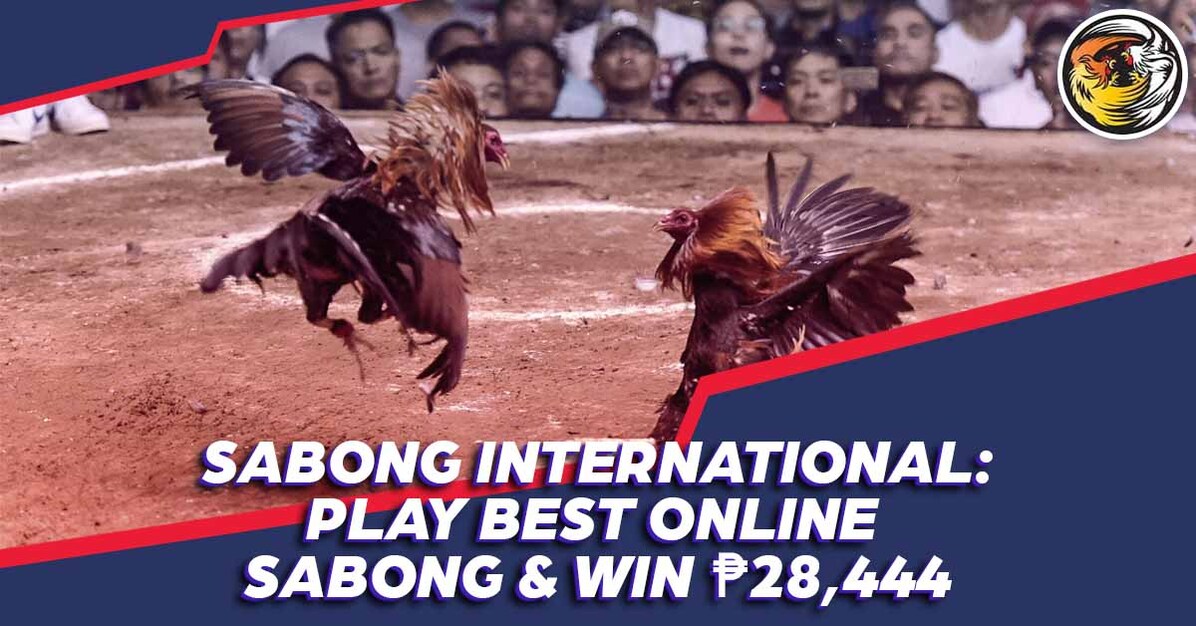Tricks of the Sabong Grandmaster: Mastering the Art of Cockfighting
The detailed world of cockfighting, specifically as exercised by the Sabong Grandmaster, uses a remarkable research study in the confluence of animal habits, training methods, and affordable strategy. To absolutely grasp the nuances of this art kind, one have to explore how the Grandmaster integrates the physical and emotional elements of fowl training while browsing the moral factors to consider integral in this traditional method. What are the crucial understandings that separate the extraordinary from the ordinary in this world? Comprehending this might redefine one's perspective on the sport and its professionals.
History of Cockfighting

As the centuries progressed, cockfighting spread across various continents, adapting to local personalizeds and social dynamics. In middle ages Europe, it got popularity among the nobility, who concerned it as a display of riches and condition. By the 17th century, the sport had established itself in England, causing the development of formalized regulations and guidelines.
In the Americas, specifically in the Caribbean and the Philippines, cockfighting took on special features affected by early american histories and native practices. Today, while the sporting activity continues to be debatable and deals with legal obstacles in numerous regions, its historical significance proceeds to spark discussions concerning animal rights, cultural heritage, and societal values. The advancement of cockfighting mirrors broader styles of human communication with nature and the complexities of practice.
Comprehending Fowl Behavior
Understanding fowl behavior is vital for those involved in the sporting activity of cockfighting, as it directly influences health, training, and performance. Roosters exhibit a variety of actions that can show their physical and psychological states. Notably, aggressiveness, territoriality, and social power structure play considerable duties in their behavior.
Hostility is a natural impulse in roosters, mainly driven by the demand to assert prominence. Observing communications among roosters can reveal their chain of command, which is crucial for managing their atmosphere. A confident fowl shows an extra assertive stance, while a submissive one may show indications of stress and anxiety or worry, such as crouching or staying clear of eye get in touch with.

Training Strategies for Champions
Reliable training techniques are critical for creating champ fowls that excel in the competitive sector of cockfighting. A systematic strategy makes sure that each bird reaches its full possibility, integrating physical fitness with psychological stamina.
To begin, developing a constant training routine is vital - Sabong Grandmaster. This includes daily workouts that boost strength, agility, and endurance. Routines may include controlled competing sessions with both real-time and fabricated challengers to imitate competitors, permitting roosters to sharpen their combating skills in a secure atmosphere
Integrating dexterity drills, such as barrier programs and leaping workouts, significantly enhances a fowl's physical abilities. In addition, introducing varied surface areas useful content and surfaces can enhance their versatility throughout battles.
Mental training must not be ignored. Acquainting the birds with the sounds and views of an affordable atmosphere can decrease anxiety and stress and anxiety on fight day. In addition, positive support methods, such as satisfying preferable actions, can infuse confidence in the fowls.
Lastly, preserving a calm and assertive existence throughout training sessions fosters trust between the fowl and the handler, crucial for attaining optimum performance. With each other, these techniques create a detailed training routine that grows champions ready to succeed in the sector.
Health And Wellness and Nourishment Basics

Incorporating a mix of wheat, corn, and barley gives browse around here necessary carbs, while protein sources such as fish meal, soybean dish, or bugs sustain muscular tissue development and recovery. In addition, integrating fresh fruits and veggies can boost the total dietary profile, offering anti-oxidants that boost the body immune system.
Hydration is just as important. Access to tidy, fresh water should be a priority, as dehydration can seriously affect efficiency (Sabong Grandmaster). Regular wellness examinations are necessary to keep an eye on for any potential illnesses or bloodsuckers that might jeopardize a fowl's problem
Furthermore, the timing of feed is crucial. Providing nutrition at appropriate intervals guarantees that roosters maintain power degrees throughout their training and recovery phases. By focusing on these wellness and nourishment basics, sabong lovers can assist their fowls achieve optimum efficiency in the competitive field.
Strategies for Successful Suits
Success in cockfighting depend upon his response a combination of calculated prep work and in-ring methods. Efficient match techniques begin long prior to the fight, with cautious option of the fowl. Breeders should prioritize hereditary characteristics such as aggressiveness, endurance, and strength, making sure that the selected bird demonstrates a strong family tree of performance.
Training is essential; roosters should be conditioned through a routine that includes physical workout, competing with various other birds, and direct exposure to numerous environments. This preparation not only develops stamina yet likewise boosts the bird's adaptability to different challengers.
Throughout the suit, a trainer has to utilize eager observation and quick decision-making. Identifying the challenger's methods enables timely changes, such as moving the fowl's stance or encouraging more hostile behavior. Timing is critical; understanding when to encourage or limit the bird can imply the difference between triumph and loss.
Last but not least, preserving a tranquil disposition during matches cultivates self-confidence in the fowl. A well balanced method, integrating both physical and psychological preparedness, eventually results in effective results in the sector, demonstrating that proficiency in cockfighting is as much regarding approach as it is concerning the birds themselves.
Conclusion
The proficiency of cockfighting, as exemplified by the Sabong Grandmaster, hinges on a thorough understanding of fowl behavior, effective training strategies, and ideal wellness and nutrition. Inevitably, the secrets of the Sabong Grandmaster lie in the unified balance of these elements, making sure the proceeded heritage of this old sporting activity.
To really grasp the subtleties of this art type, one should check out how the Grandmaster balances the emotional and physical aspects of fowl training while navigating the ethical factors to consider intrinsic in this conventional practice.Understanding fowl actions is crucial for those included in the sporting activity of cockfighting, as it directly influences training, health and wellness, and efficiency.Preserving optimum wellness and nutrition is vital for making certain that roosters get to peak efficiency in the cockfighting field. Providing nourishment at suitable intervals guarantees that fowls keep energy levels throughout their training and healing stages.The proficiency of cockfighting, as exemplified by the Sabong Grandmaster, pivots on a detailed understanding of fowl actions, effective training techniques, and optimum wellness and nourishment.
 Edward Furlong Then & Now!
Edward Furlong Then & Now! Charlie Korsmo Then & Now!
Charlie Korsmo Then & Now! Jane Carrey Then & Now!
Jane Carrey Then & Now! McKayla Maroney Then & Now!
McKayla Maroney Then & Now! Ricky Schroder Then & Now!
Ricky Schroder Then & Now!